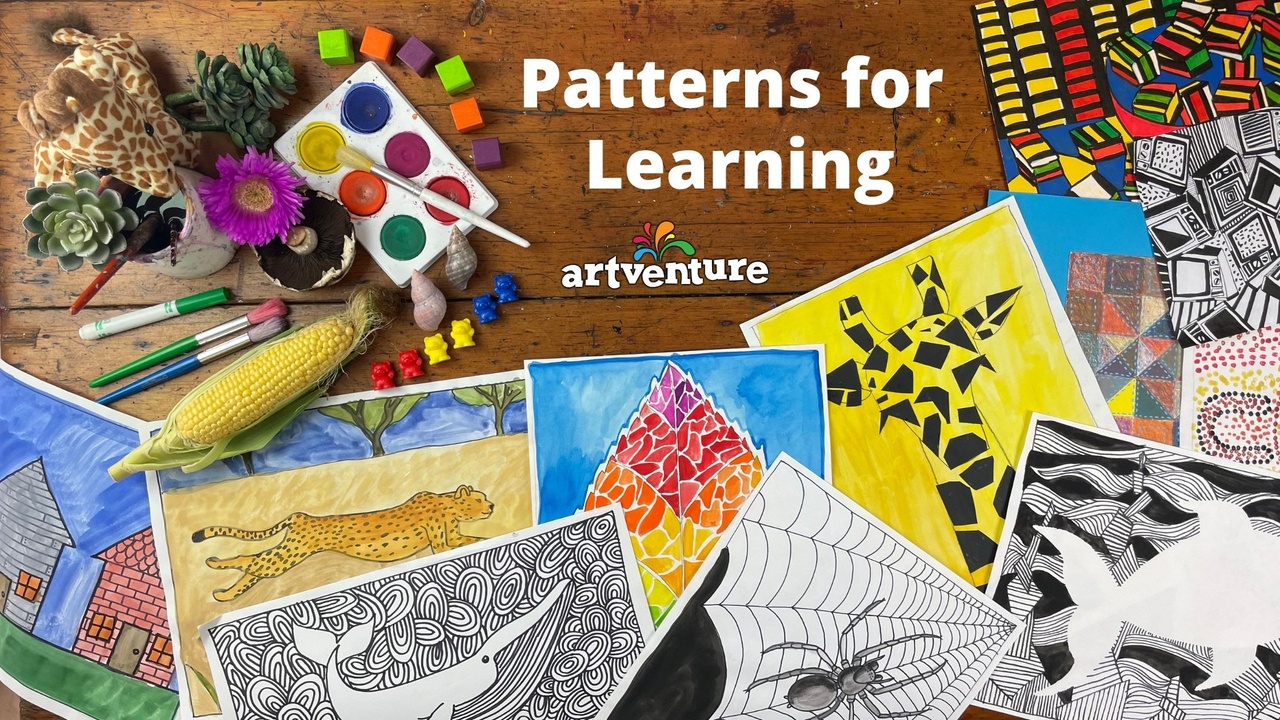Patterns for Learning
Oct 17, 2022
As parents and educators, we help children develop skills and understandings through teaching about patterns. Patterns are repeated designs which may be manufactured or appear in nature. Observing patterns can help develop the ability to predict and hypothesise. Creating patterns improves our critical thinking and reasoning skills. These are foundations for ongoing, life-long learning.
In the curriculum
In the Australian Curriculum, the Numeracy Learning Progression describes this as ‘Figuring out how a pattern works [which] brings predictability and allows the making of generalisations’. This ability to make generalisations grows from number patterns to algebraic thinking. Exploring Patterns provides an insight into how the concrete recognition of a repeated blue-red-yellow pattern with real objects like coloured blocks can translate into a more abstract acknowledgement of an ABC pattern.
Science, particularly learning outdoors in the natural environment, ‘involves making predictions and describing patterns and relationships’. Learning in the early years happens with observing, then grouping living and non-living things. Patterns in observed behaviours also help develop a greater awareness of cause and effect, the consequences of certain actions. Then there are cycles: for example, life cycles like that of the butterfly and us humans, environmental cycles like for water and carbon, or earth and space cycles like the orbits of the earth and moon.
In Visual Arts, students ‘explore ideas and practices used by artists, including practices of Aboriginal and Torres Strait Islander artists, to represent different views, beliefs and opinions’. Artworks created by First Nations People are an enlightening example of how patterns can be used to record events, tell a story and communicate in the now as well as for future generations.
Click here to apply for a school or company LOGIN.
Activities involving Art
Exploring different ways to engage learners with patterns and patterning, will often involve art and design at some stage. Grouping pencils, markers or paints to use, especially when considering warm colours, cool colours or a rainbow effect, can be an activity in itself.
As there are dozens of lessons relating to patterns, in both the junior Artventure library and the senior Art Eye Deer section, I thought I’d do some ‘patterning’ myself and approach all the possibilities in smaller chunks.
1. Patterns in Nature
When walking with kids outside, I love pointing out the clever patterns mother nature has created for us: the petals on flowers, the veins on leaves, the kernels on a corn cob, the spikes or thorns on a pineapple, the gills or ribs on the underside of a mushroom, the radial and spiral pattern of a spiderweb, a rainbow in the sky, waves rolling in…
Liking maths and visual aesthetics, I have a special fascination for ‘fractals’ in nature, where parts of something are repeated but at different sizes: branches of a tree, fronds on a fern, the arrangement of leaves on many succulents, and in flashes of lightning. A particular favourite is evidence of the fibonacci sequence in the spiral of some shells.
To find some lessons that involve patterns in nature, try searching for ‘tree’ (Stylised Tree), ‘leaf’ (Leaves - observational drawing), ‘flower’ (Sunflower), ‘rainbow’ (Rainbow Weather) or more specifically ‘corn’, ‘mushroom’, ‘pineapple’, ‘snowflake’ or ‘web’.
2. Animal Patterns
Our animal friends also provide us with opportunities to observe patterns, often serving a function - particularly for camouflage, like spots and stripes. Feathers and scales also come in a patterned coat. Several good examples in Artventure lessons will come up by searching these words for examples or clicking for specific lessons: ‘giraffe’, ‘cheetah’ and ‘owlette’.
3. Patterns where Art meets Maths
Combining art and maths can be fun. Using patterns to create pictures or embellish artworks often starts with doodling, doodle art - random, abstract patterns (that appear on our page while we are ostensibly focused elsewhere). Use of space and spatial awareness in these designs involves many basic mathematical concepts. These artworks are less realistic representations and more artistic creations. For some artists, adding patterns can be easier and more appealing.
It may also be an opportunity to study the works of some famous artists like Piet Mondrian (‘Unicorn - abstract’ lesson), Picasso (‘portrait’ lesson) or the Kandinsky lesson.
Try these shape-patterned animals:
Another approach that appears in our lessons is to use patterns within an object:
- ‘abstract’ - Night tree, Leaves, Mountains, Flower;
- ‘Pattern feather’, ‘Pattern lotus flower’, ‘Owl patterns’ and ‘Rhinoceros’;
- and ‘dance silhouette’ - hip hop and ballet.
Patterns can also form a background - considerations of negative and positive spaces:
- ‘Negative spaces - fish’ and ‘Whale in patterns’.
4. Patterns in Cultural Artwork
To find a few lessons inspired by the artwork of First Nations People, search Artventure for ‘indigenous’. Results will include the ‘henna hand’ and artworks for a kangaroo, snake, emu and platypus.
Click here if you’d like to give ARTVENTURE as a GIFT.
Pulling patterns together
There are many more examples of lessons using patterns in the junior library, Artventure. Patterns in construction like brick and stone walls, beams and arches in towers and bridges… But beyond these, there are great examples also in the senior library, Art Eye Deer. Some on offer are ‘allsorts’ (a licorice colour sensation), ‘whirling fantails’, ‘rock art’, ‘family of colours’ and ‘two great waves’. Use ‘pattern’ or ‘patterns’ to search for more.
As I engage with young people almost on a daily basis, using the language of patterns, pointing out patterns, modelling the creation of patterns, and drawing designs with patterns helps them develop their own ability to organise, plan and design; to anticipate what might come next; to reason; to use logic, and to make predictions. And I love that we can draw attention to nature’s clever patterning. To also build these skills through artistic endeavours, using drawing and painting and concrete materials helps implant these memories for future reference.
Erica
Teacher and Artventure Blogger
Click HERE to sign up for lessons or try ARTVENTURE for FREE

